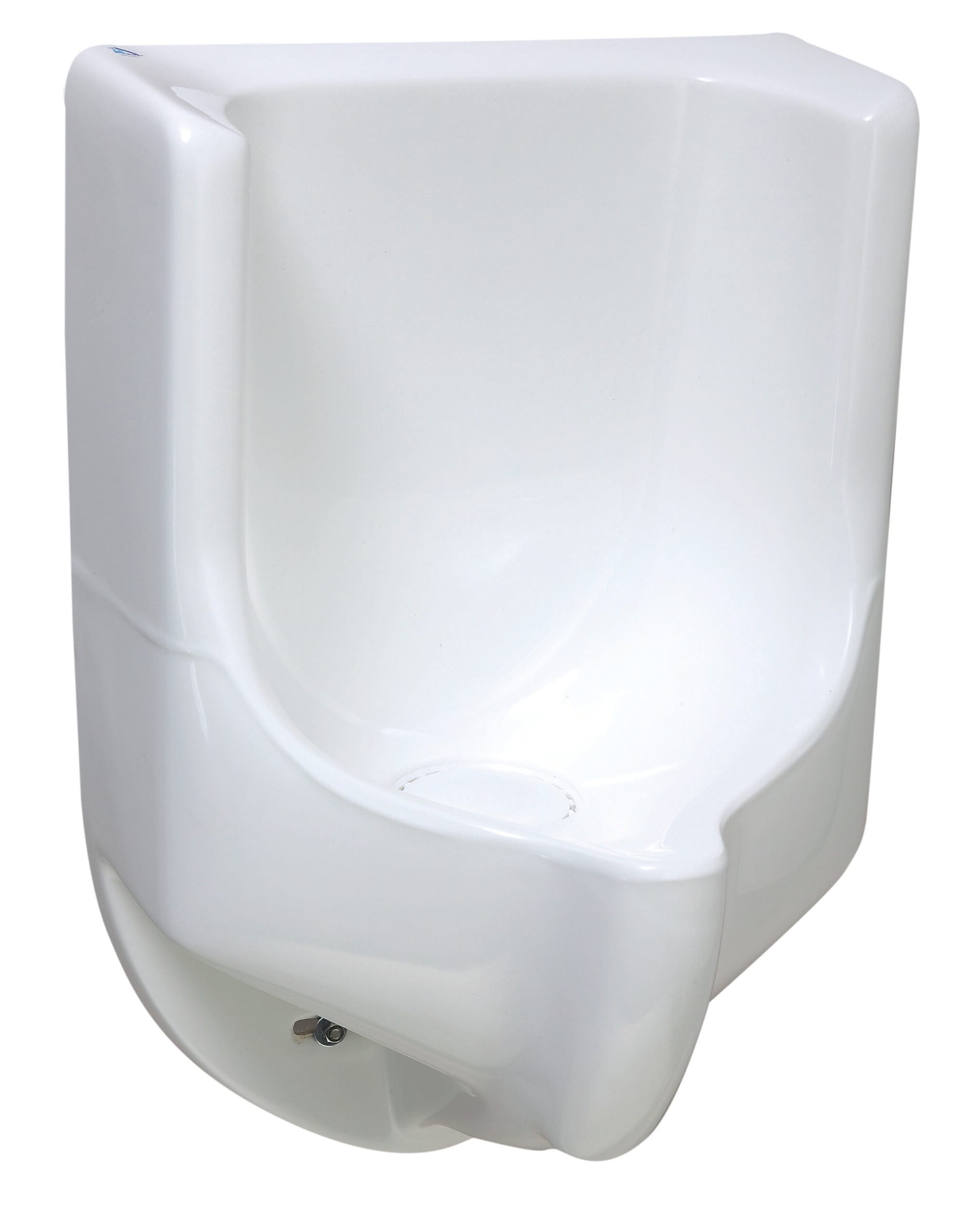Eliminate water waste and slash utility bills with waterless urinal technology. This guide provides a comprehensive overview of waterless urinals, covering everything from their inner workings to installation and maintenance, empowering you to make an informed decision for your restroom’s future.
Decoding the Waterless Urinal: How It Works
Curious about the magic behind the no-flush wonder? Waterless urinals employ a simple yet ingenious system. Instead of relying on water for flushing, they utilize a trap, typically filled with a sealant liquid like BlueSeal. This sealant, often a type of oil, is lighter than urine. Gravity pulls the urine through the sealant and down the drain, while the sealant acts as a barrier, preventing odors and sewer gases from escaping back up. This innovative approach eliminates the need for a water supply line, simplifying installation and contributing significantly to water conservation. Discover how this technology complements water conservation efforts like those at Lake Cachuma.
Several types of waterless urinals exist, each with its own set of advantages and disadvantages. Some utilize replaceable cartridges containing the sealant, offering a convenient maintenance solution. Others feature a more permanent trap design requiring periodic sealant replenishment. Furthermore, waterless urinals are available in various materials, including durable ceramic and sleek stainless steel, catering to a range of aesthetic preferences. Specific technologies like EcoTrap, developed by Waterless Co. Inc., utilize a specialized sealant that minimizes evaporation and odor release. Other mechanisms, such as membrane traps, offer alternative approaches to odor control and waste management, each with varying maintenance requirements and costs. Understanding these variations empowers you to choose the ideal system for your specific needs.
Exploring Waterless Urinal Options
Waterless urinals aren’t a one-size-fits-all solution. They’re designed to cater to a variety of needs and aesthetics.
Materials: From Classic to Contemporary
- Ceramic: A timeless choice known for its durability and classic appearance.
- Stainless Steel: Offers a sleek, modern look, often preferred in contemporary settings.
Mounting Styles: Tailored to Your Space
- Wall-Hung: Maximizes floor space and creates a clean, minimalist aesthetic.
- Stall: Provides enhanced privacy, ideal for restrooms where individual compartments are preferred.
- Trough: A space-saving solution for high-traffic restrooms, accommodating multiple users simultaneously.
Leading Brands and Models: A Diverse Selection
Several reputable manufacturers offer a wide array of waterless urinal models:
- Armitage Shanks: Known for innovative designs like the Sanura Hygeniq 500mm (£325), offering hygienic and water-saving solutions.
- RAK Ceramics: Provides budget-friendly options such as the RAK Venice (£116 – £187), making waterless technology accessible to a wider audience.
- Vitra: Offers comprehensive solutions like the 4-Bowl Exposed Urinal System (£832), designed for high-traffic environments.
- Duravit: Features stylish and functional models like the No.1 Rimless (£349), blending modern design with water-saving technology.
- Geberit: Offers innovative solutions like the Smyle series, combining functionality with a sleek design.
Reaping the Rewards: Benefits of Waterless Urinals
Switching to waterless urinals offers a multitude of advantages.
Water Conservation: A Significant Impact
Waterless urinals can save thousands of gallons of water annually, significantly reducing your water footprint. This translates to substantial cost savings on your water bill, a benefit particularly noticeable in high-traffic restrooms.
Hygiene: A Cleaner Restroom Environment
By eliminating the flushing action, waterless urinals can minimize the spread of bacteria and germs, potentially contributing to a more hygienic restroom environment. The sealant barrier further enhances hygiene by preventing the backflow of sewer gases and odors.
Environmental Benefits: Contributing to a Greener Future
Reduced water consumption translates directly to a smaller environmental footprint. Waterless urinals contribute to sustainable water management practices and help conserve this precious resource.
Low Maintenance: Simplicity at its Best
With fewer moving parts compared to traditional urinals, waterless models often require less maintenance. This translates to less downtime and fewer repair costs over the lifespan of the fixture. A simple valve anti-siphon can further reduce maintenance needs in your plumbing system.
Installation and Upkeep: A Practical Guide
Installation: A Straightforward Process
Installing a waterless urinal is typically straightforward, often even simpler than installing a traditional model. The absence of a water supply line simplifies the plumbing process, potentially reducing installation time and costs.
Maintenance: Keeping it Fresh and Functional
Maintaining a waterless urinal is surprisingly easy. Regular cleaning with a suitable bactericidal cleaner and periodic replacement of the sealant or cartridge are usually all that’s required. Some manufacturers recommend specific cleaning agents to ensure optimal performance and prevent damage to the sealant.
Waterless vs. Traditional: A Head-to-Head Comparison
| Feature | Waterless Urinal | Traditional Urinal |
|---|---|---|
| Water Usage | None | High |
| Initial Cost | Higher | Lower |
| Long-Term Cost | Lower | Higher |
| Maintenance | Lower, simpler | Higher, more complex |
| Hygiene | Potentially higher | Potentially lower |
| Environmental Impact | Significantly lower | Higher |
Addressing Potential Concerns
While waterless urinals offer numerous advantages, it’s important to acknowledge potential drawbacks.
Upfront Cost
The initial cost of a waterless urinal is typically higher than a traditional model. However, the long-term savings on water bills often offset this initial investment, making it a financially sound choice in the long run.
Maintenance Requirements
While generally low-maintenance, neglecting proper cleaning and sealant/cartridge replacement can lead to odor issues. Adhering to a regular maintenance schedule is crucial for optimal performance and user satisfaction.
User Acceptance
Some users may initially be hesitant to use a no-flush system. Clear signage and education can help overcome this initial resistance.
Applications: Where Waterless Urinals Shine
Waterless urinals are particularly well-suited for high-traffic environments such as:
- Stadiums and Arenas: Where water conservation can make a significant impact.
- Airports: Contributing to sustainable operations and cost savings.
- Office Buildings: Reducing water consumption and promoting a greener image.
- Schools and Universities: Educating future generations about water conservation.
- Eco-Conscious Homes: Aligning with sustainable living practices.
The Future of Waterless Technology
The field of waterless urinal technology is constantly evolving. Researchers are exploring innovative solutions, including:
- Smart Urinals: These futuristic fixtures can monitor usage patterns and optimize maintenance schedules, further enhancing efficiency.
- Self-Cleaning Systems: Emerging technologies aim to automate the cleaning process, minimizing manual labor and maximizing hygiene.
Conclusion: Embracing a Sustainable Restroom Solution
Waterless urinals offer a compelling combination of water conservation, cost savings, and environmental responsibility. While the initial investment may be higher, the long-term benefits make them a smart choice for a wide range of applications. By understanding the different types, installation considerations, and maintenance requirements, you can confidently choose the right waterless urinal solution for your needs and contribute to a more sustainable future.
- Unlock Elemental 2 Secrets: Actionable Insights Now - April 2, 2025
- Lot’s Wife’s Name: Unveiling the Mystery of Sodom’s Fall - April 2, 2025
- Photocell Sensors: A Complete Guide for Selection and Implementation - April 2, 2025
















